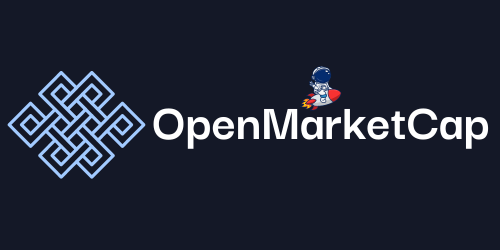Ever wondered what it would be like if banks didn’t control our money? Imagine a world where financial transactions are as easy as sending a text message, and middlemen are a thing of the past. That’s the promise of DeFi, or decentralized finance, where blockchain technology takes the wheel.
Overview of DeFi
Decentralized Finance (DeFi) opens up a world of possibilities by eliminating intermediaries like banks. It’s like having the financial world at our fingertips, thanks to blockchain technology.
Decentralized
DeFi’s decentralized nature stands out. Imagine a world where code, not banks, handles our transactions. Changes and updates occur democratically, through community voting. This ensures a truly collective control, devoid of centralized power.
Open and Permissionless
Access to DeFi is universal. All that’s needed is an internet-connected device. Traditional barriers, such as geographical restrictions or credit scores, don’t exist here. We’ve all got the same entry point, making finance more inclusive than ever.
Transparent
Transparency is another key feature. Every piece of code controlling these services is open for verification. Users can audit transactions and ensure everything works as intended. This kind of openness builds trust like nothing else.
User-Centric
In the DeFi world, users are at the center. Incentive models reward us for participating. We can choose the interface that best suits our needs and preferences. It’s finance that finally feels personal and tailored.
Interoperable
Interoperability means DeFi services seamlessly work with one another. Sharing blockchain networks enables a connectivity that’s both powerful and efficient. We can combine services and protocols, creating unique financial experiences with ease.
Composable
DeFi’s composability allows different protocols to work together. Users can mix and match services to enhance their experience. Picture it like building with Legos—each piece adds a new capability, creating something truly personalized.
DeFi is transforming finance with its decentralized, open, transparent, user-centric, interoperable, and composable features. We’re not just customers; we’re participants and collaborators in this new financial ecosystem.
Key Features of DeFi
Decentralized Finance (DeFi) is changing how we think about financial transactions. Let’s take a closer look at the key features driving this change.
Decentralization
DeFi applications thrive on decentralized networks. By using blockchain technology, these platforms cut out middlemen like banks and financial institutions. Anyone can join and participate without needing approval from a central authority. This grassroots approach empowers individuals, giving them direct control. For instance, Uniswap, a decentralized exchange (DEX), allows users to trade cryptocurrencies directly without an intermediary.
Smart Contracts
Smart contracts are the backbone of DeFi. These pieces of code automate transactions, ensuring they’re executed exactly as programmed. This means no more waiting for human intermediaries or dealing with their potential errors. For example, platforms like Aave allow users to lend and borrow assets through smart contracts. When a borrower meets the conditions set by the lender, the contract executes the transfer automatically, without human intervention.
Security
Security stands out as a core advantage of DeFi. Built on blockchain technology, these applications offer transparency and security. Transactions are logged on public ledgers, making them immutable and tamper-proof. This level of security ensures that users can trust the integrity of their transactions. An example is MakerDAO’s stablecoin, DAI, which is secured by a multitude of cryptocurrencies, and its smart contracts ensure collateral is always sufficient.
DeFi’s decentralized nature, smart contracts, and robust security are reshaping finance in exciting ways.
Prominent DeFi Blockchain Platforms
In our journey through the world of DeFi, we’ll highlight some standout blockchain platforms making waves.
Ethereum
Ethereum holds a special place in the DeFi ecosystem. Capturing 79% of all decentralized applications (dApps) and protocols, Ethereum has set a standard. It’s the second-largest blockchain network and shines because of its smart contracts, which have far-reaching use cases beyond just payments. For example, platforms like Uniswap and Aave thrive on Ethereum. But, it’s not all smooth sailing. Ethereum faces challenges like high gas fees, scalability issues, and auditing complexities that can cost hundreds of thousands of dollars. Even though these downsides, Ethereum remains a hotbed for Layer 2 projects, maintaining its prominence.
Binance Smart Chain
Binance Smart Chain (BSC) is another heavyweight in the DeFi arena. Known for its speed and lower transaction fees compared to Ethereum, BSC has attracted many dApps and DeFi projects. PancakeSwap, a popular decentralized exchange, operates on BSC, offering lower fees and faster transactions. This has helped BSC carve out its space in the DeFi world as it continues to grow and attract more developers and users.
Polkadot
Polkadot stands out with its unique multi-chain technology. Designed to connect multiple blockchains, Polkadot allows them to work together, sharing information and assets. This interoperability opens up many possibilities for DeFi projects. For instance, Acala Network, a DeFi hub on Polkadot, brings together various services like a stablecoin and a decentralized exchange. Although Polkadot is newer compared to Ethereum and BSC, its innovative approach to blockchain interoperability makes it a noteworthy player in the DeFi landscape.
DeFi Applications
Decentralized Finance (DeFi) has reshaped how we think about financial ecosystems, taking us away from traditional banks and putting control back into our hands. Let’s jump into some specific DeFi applications, shedding light on how they’re revolutionizing finance.
Decentralized Exchanges (DEXs)
Decentralized exchanges, or DEXs, are fascinating. They let us trade cryptocurrencies without needing a central authority. One notable example is Uniswap. It’s a popular platform within the Ethereum ecosystem where we can swap a wide variety of digital assets like ERC20 tokens. Uniswap’s interface is user-friendly, and its liquidity pools are robust, making trading smooth and efficient. Remember when centralized exchanges faced major hacks? Uniswap bypasses these concerns with its decentralized nature, enhancing security.
SushiSwap is another DEX that’s created quite a buzz. Its focus isn’t just on trading; it also lets us earn interest through savings-like accounts. This blend of trading and earning interest opens up new financial avenues. SushiSwap effectively incentivizes us to provide liquidity, rewarding participants in ways traditional finance simply can’t match.
Lending Platforms
DeFi lending platforms are another critical innovation. Platforms like MakerDAO allow us to borrow DAI, a stablecoin pegged to the US dollar. By locking up collateral, we can borrow DAI through automated smart contracts. This eliminates the red tape and biases often found in conventional lending. The smart contracts govern the loans, repayments, and even liquidation, providing a transparent and trustless environment.
Compound Finance takes things a step further with its decentralized lending protocol. Here, both lenders and borrowers can earn COMP tokens as rewards. These tokens are tradable on various cryptocurrency exchanges, adding an extra layer of utility to the platform. Compound’s system, based on incentivizing participation, democratizes the lending process. By offering competitive interest rates, it creates an ecosystem where we all have the opportunity to grow our assets.
Yield Farming
Let’s not forget yield farming, an exciting DeFi sector that lets us earn rewards by staking our cryptocurrencies in different DeFi protocols. This involves supplying liquidity to decentralized exchanges or lending platforms to earn interest and additional token rewards. It’s a high-risk, high-reward strategy that requires careful consideration but can be immensely profitable.
Take, for example, the SushiSwap platform we discussed earlier. By participating in SushiSwap’s liquidity pools, we can earn SUSHI tokens as rewards. The process involves lending our assets to the platform, which then uses these funds for various trading activities. In return, we receive fees and additional tokens, creating a passive income stream.
Another example is Yearn Finance, where yield farming strategies are automated to optimize returns across DeFi protocols. It’s like having a sophisticated financial advisor who continually seeks the best opportunities, allowing us to maximize our earnings with minimal effort.
By exploring these DeFi applications, we see how blockchain technology is paving the way for a more inclusive and decentralized financial future. These platforms aren’t just innovations; they represent a shift toward more democratized and transparent financial systems.
Challenges in DeFi
DeFi offers numerous advantages, but it isn’t without its hurdles. Let’s jump into some of the key challenges facing the DeFi space today.
Scalability Issues
Scalability is a significant hurdle for DeFi. Ethereum, the backbone of most DeFi projects, struggles with high transaction costs and limited scalability. Right now, Ethereum can handle around 15 transactions per second, which isn’t nearly enough for global financial demands. This congestion drives up gas fees, making small transactions impractical.
But there’s hope on the horizon. Ethereum is undergoing upgrades that could push its capacity to over 100,000 transactions per second. Layer 2 solutions like Arbitrum and Optimism already offer a glimpse of a more scalable future with much lower transaction fees. These layer 2 blockchains sit on top of Ethereum and process transactions faster and cheaper, making DeFi more accessible.
Regulatory Concerns
Regulation is another looming issue. DeFi operates in a gray area, creating friction with traditional financial frameworks. Governments worldwide are watching DeFi developments closely, often with a skeptical eye. Let’s face it, decentralized and anonymous financial activity doesn’t sit well with regulatory bodies focused on anti-money laundering and combating the financing of terrorism (AML/CFT).
This regulatory scrutiny brings both challenges and opportunities. On one hand, DeFi protocols could face stricter regulations, possibly hindering innovation. On the other, clear guidelines could add legitimacy to the space and make it safer for mainstream adoption.
In essence, navigating these challenges is part of DeFi’s growing pains. As we tackle scalability and regulatory hurdles, DeFi’s potential to revolutionize finance becomes more tangible and exciting.
Conclusion
DeFi’s potential to revolutionize finance is undeniable. With platforms like Uniswap and Aave leading the charge, we’re seeing a shift towards more decentralized and secure financial systems. While challenges like scalability and regulation remain, solutions are on the horizon, and the future looks bright. As we navigate these hurdles, the promise of a more open and inclusive financial world becomes increasingly achievable. Let’s keep an eye on these developments and stay engaged with the ever-evolving DeFi landscape.

